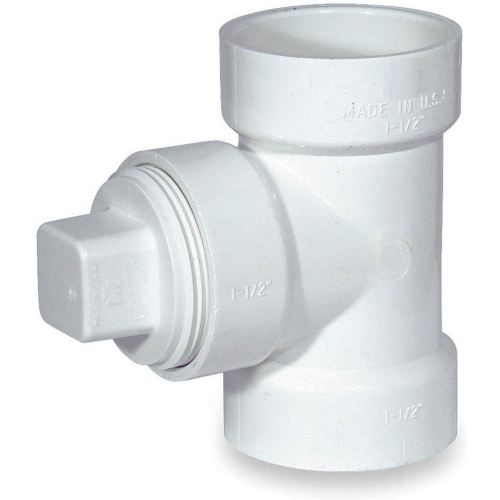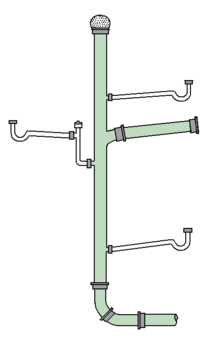
When it comes to maintaining a plumbing system, the strategic placement of cleanouts is crucial for ensuring efficiency and ease of access. Often overlooked, these vital components serve as access points for clearing blockages, which can save homeowners from costly repairs and extensive damage. Understanding where to place plumbing cleanouts can make all the difference in a system's functionality.
In residential and commercial properties alike, cleanouts should be strategically positioned in locations that allow for straightforward maintenance. They need to be accessible, yet discreet, blending seamlessly with the property's design. Ideal placements often include the base of vertical stacks, at major changes in direction, and at property lines. By ensuring cleanouts are placed correctly, property owners can enjoy a smoothly running plumbing system with minimal disruption.
Plumbing cleanouts play a crucial role in maintaining an efficient plumbing system. They provide essential access points needed for clearing blockages and facilitating maintenance operations.

Plumbing cleanouts are access points integrated into a building's drainage system. Typically consisting of a removable cap or cover, they offer direct entry into the pipes for cleaning and inspection purposes. Positioned strategically, usually at the base of vertical stacks and direction changes, they enable quick response to any potential blockages or flow issues.
Cleanouts serve a vital purpose in plumbing systems. By allowing for easy access to internal pipe networks, they help identify and resolve obstructions that can lead to backups or line damage. In turn, this preventive mechanism reduces the likelihood of extensive repairs and water damage. Besides, cleanouts help routine maintenance checks, ensuring that plumbing systems operate smoothly and efficiently over time.
Strategic placement of plumbing cleanouts ensures effective system maintenance and minimises disruption. Various factors guide their location within the drainage network.
Building codes dictate specific guidelines for cleanout placement to ensure safety and functionality. Local regulations may specify that cleanouts should be installed at the base of every soil stack and at intervals not exceeding 30 metres for horizontal drainage pipes. These codes are designed to provide straightforward access for inspections and maintenance, which helps prevent potential health and safety hazards resulting from inaccessible or non-compliant plumbing systems. Understanding and complying with these regulations guarantees that cleanouts are positioned correctly and legally.
Accessibility is crucial for the convenience of maintenance tasks. Cleanouts should be placed where they're easily reachable by a plumber, such as near ground level or in utility rooms, to help quick intervention. Obstructed or concealed cleanouts might lead to increased labour and time during maintenance. Priority should be given to areas prone to blockages, such as bends and turnings in pipelines, ensuring swift access for any required cleaning or repairs. When cleanouts are accessible, it allows for efficient routine inspections and rapid responses to any unforeseen blockages, eventually enhancing the plumbing system's reliability.

Strategic placement of plumbing cleanouts ensures easy access for maintenance and emergency repairs. Their locations often differ in residential versus commercial settings due to varying needs. What Plumbing Works Are Notifiable?
In residential properties, cleanouts should be positioned at crucial points along the plumbing system. They must be installed:
Adhering to these placements helps maintain a smoothly operating plumbing system within homes by preventing damage and reducing repair time.
In commercial and industrial buildings, plumbing systems often cover larger areas and require more cleanout access points. Key placement includes:
These strategic placements consider broader spans and heavy usage typical in commercial environments, ensuring system reliability and efficient operation.
Cleanout placement presents specific challenges that can affect plumbing system performance. These challenges include common installation mistakes and space constraints that influence positioning decisions.
Incorrect placement and poor accessibility often complicate cleanout installation. Installers sometimes place cleanouts in hard-to-reach areas, impeding quick access during maintenance. Inadequate sealing can result in leaks, damaging nearby structures. Installing cleanouts without considering building angles or flow direction limits their effectiveness in managing blockages.
Space constraints in urban or densely built environments can restrict cleanout options. In small residential properties, limited space around vertical stacks or near junctions can pose obstacles. Building layouts with insufficient clearance for maintenance equipment require innovative solutions like slimline or compact cleanouts. Strategic planning, even in restricted spaces, ensures accessibility and functionality.
Innovative solutions can overcome space constraints in plumbing cleanout placement. Slimline cleanouts, designed with a reduced diameter, fit narrow spaces without sacrificing functionality. These compact units provide effective blockages management while allowing access in confined areas. Surface-mounted cleanouts present another alternative for installations where below-floor access is challenging. These models, fitted directly onto walls or floors, eliminate the need for extensive underfloor access and can be aesthetically integrated into the building's design.
For buildings with complex angles, adjustable cleanouts offer flexibility. Their rotatable fittings adapt to varied directions, ensuring alignment with existing plumbing systems. When encountering high-rise applications, vertical riser cleanouts provide solutions, featuring an extended reach, which accommodates tall structure requirements.
Utilising indoor cleanout assemblies, particularly in multiple-dwelling units, enhances accessibility. These systems bring cleanout access within interior spaces, negating the need for exterior access points, especially in buildings with limited outdoor facilities. Prioritising innovative placement solutions maintains system efficiency and user convenience, even in challenging environments. Integrating alternative cleanout strategies ensures functional plumbing systems, irrespective of spatial or architectural limitations. Efficient planning and modern designs resolve placement challenges, safeguarding maintenance and performance reliability.
Plumbing cleanouts play a vital role in maintaining the efficiency and reliability of any plumbing system. Their strategic placement, guided by building codes and tailored to the specific needs of residential or commercial settings, ensures smooth operation and easy maintenance access. By addressing challenges such as space constraints and installation errors, property owners can optimise cleanout functionality. Embracing innovative solutions like slimline or adjustable cleanouts further enhances accessibility, especially in complex environments. Eventually, thoughtful planning and modern design are key to safeguarding plumbing systems' performance and longevity, providing peace of mind and minimising potential disruptions.
Plumbing cleanouts are essential access points within a drainage system, allowing for easy clearing of blockages. They enable quick responses to potential issues, facilitate regular maintenance checks, and help minimise costly repairs and water damage by providing direct access to internal pipe networks. Properly positioned cleanouts ensure the plumbing system operates smoothly and efficiently.
In residential properties, cleanouts should be positioned at the base of vertical soil stacks, near major directional changes, and at the junction of house drains and lateral sewer lines. These locations allow for easy maintenance access and help prevent damage and blockages within the plumbing system.
Building codes dictate specific guidelines for cleanout placement to ensure safety and functionality. They require cleanouts at the base of every soil stack and at intervals not exceeding 30 metres for horizontal drainage pipes. Complying with these codes ensures straightforward access for inspections and maintenance.
In densely built urban areas, space constraints can restrict cleanout options. Limited space around vertical stacks or junctions in small residential properties can pose installation challenges. These constraints necessitate innovative solutions like slimline, surface-mounted, and adjustable cleanouts to maintain accessibility and functionality.
For high-rise buildings, vertical riser cleanouts are an ideal solution. These cleanouts are designed specifically for tall structures, enhancing accessibility to the plumbing system without invasive additions. By bringing cleanout access within interior spaces, maintenance becomes more manageable and efficient.
Common installation mistakes include placing cleanouts in inaccessible areas, poor sealing leading to leaks, and failing to consider building angles or flow directions. These issues can complicate maintenance and impede the effectiveness of cleanouts, underscoring the need for careful planning and strategic placement.
Plumbing cleanouts should be inspected regularly, ideally during routine maintenance checks. The frequency depends on the usage and age of the plumbing system. Regular inspections help identify potential issues early, ensuring the plumbing system remains in good working order and preventing costly repairs.
Maintaining drains by keeping them clear is key and thre are several easy things to try!